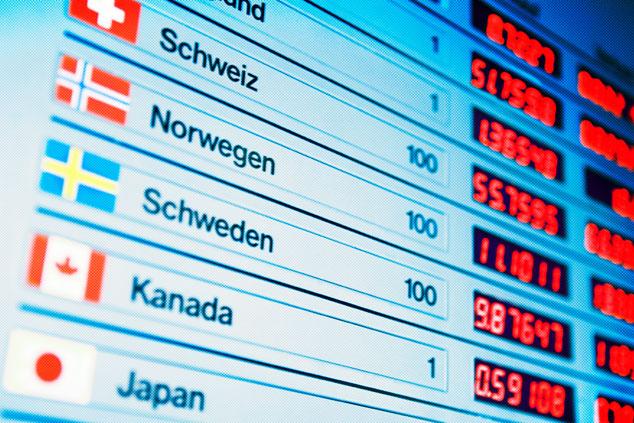
Hello and welcome to the first ever Currency Corner – the new, weekly despatch from MoneyWeek in which we look at the latest goings-on in the foreign exchange (forex, or FX) markets. May I say how delighted I am – and excited too – to be writing this column.
Forex is by far and away the biggest market in the world. According to the Bank for International Settlements (sometimes known as the “central bank for central banks”), average daily trading volume in global forex markets amounts to over $5trn per day. That’s twice the UK’s national debt.
Five trillion dollars per day is equivalent to an extraordinary $1,260trn per year, although the real number is probably higher, as forex trading takes place even on trading days when markets are not officially open.
Compare that to global stockmarkets, where, according to the World Bank, trading amounted to around $70trn last year. Forex markets are some 18 times bigger.
Not only are they the biggest markets in the world, they are the most liquid. This means spreads (the gap between what you can buy a currency for and what you can sell it for) are low – or at least they should be. Banks, credit card companies and the likes of PayPal make a fortune from forex, and are often not nearly as transparent as they should be about their rates. Most people just accept such rates out of convenience.
You might, for example, use your UK credit card when you’re on holiday, and thus pay the credit card company’s rates. You might use Paypal for transfers abroad. You might send money directly from your bank to a foreign one, without using a broker. The likes of Paypal, banks and credit card companies make a fortune from this convenience. If there is one message to take away from this first missive it is this: where possible use a proper broker for forex. You’ll save yourself a fortune.
So what influences currency markets?
Being so large means that forex markets are very hard markets to manipulate. Central bankers and finance ministers have a certain amount of influence, in that they set rates and policy, and much of a currency’s destiny is determined by the perceived stability of its political establishment.
But beyond that, it takes huge swathes of capital to move a currency. A big fund might, for example, be able to influence a particular stock by being long or short, but a currency – that takes some doing. Thus, in a funny way, forex markets are the free-est of all markets.
You will find as you watch them that different currencies display different characteristics. The pound – at least prior to Brexit – tended to rise when the banking and financial sectors were strong and fall when they were weak (such as in 2008). But because of all the instability surrounding Brexit – what with nobody quite knowing what is going on (least of all the prime minister) – the pound has lost its status as “the financial currency” and has been much weaker than normal. I happen to think it’s a long-term buy (as I’ll explain in future despatches) – but only once Brexit is resolved.
The Aussie dollar, Canadian dollar and Chilean peso tend to be strong when commodity prices are strong. Same too for the Brazilian real and Norwegian krone. The US dollar (as the world’s “reserve” currency) tends to find a lot of buyers during stockmarket panics – 2008 was a prime example.
Because rates are so low in Japan, many funds borrow in Japanese yen and then reinvest that money abroad. If markets experience selling pressure, traders sell those assets and buy back the yen, so it appreciates. Thus the yen – like the US dollar – also displays safe-haven characteristics, as it has a tendency to rise during panics.
Trends in forex can last for a long time – many years in some cases. Those who ride these trends, or plan ahead for them, can make a great deal of money. The US dollar, for example, rose pretty much in a straight line from 1980 to 1985. It then fell from 1985 to 1988, after which followed a period of meandering lower.
From 1995 through to the turn of the century it was up, up, up. Then from 2002 to 2008 it was down, down, down. President Barack Obama’s second term saw the US dollar trending higher pretty much most of the way. Donald Trump’s presidency reversed that trend, though since 2018 it has been rising again.
We’ll be identifying these forex trends, as well as considering which events could disrupt or influence them, every week in these pages.
I can’t wait to get going. See you here next week!
Dominic Frisby